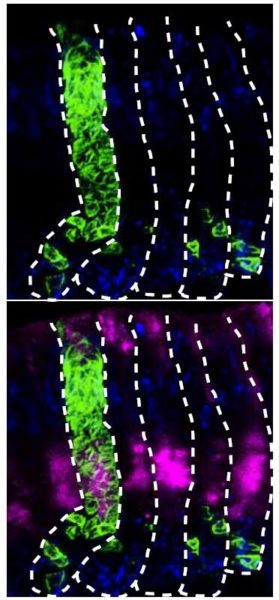New research has shown that the stomach naturally produces more stem cells than previously realized, likely for repair of injuries from infections, digestive fluids and the foods we eat.
Stem cells can make multiple kinds of specialized cells, and scientists have been working for years to use that ability to repair injuries throughout the body. But causing specialized adult cells to revert to stem cells and work on repairs has been challenging.
Scientists from Washington University School of Medicine in St. Louis and Utrecht Medical Center in the Netherlands report in the new study that a class of specialized cells in the stomach reverts to stem cells more often than they thought.
“We already knew that these cells, which are called chief cells, can change back into stem cells to make temporary repairs in significant stomach injuries, such as a cut or damage from infection,” said Jason Mills, MD, PhD, associate professor of medicine at Washington University. “The fact that they’re making this transition more often, even in the absence of noticeable injuries, suggests that it may be easier than we realized to make some types of mature, specialized adult cells revert to stem cells.”
The findings are published Oct. 10 in Cell.
Chief cells normally produce digestive fluids for the stomach. Mills studies their transformation into stem cells for injury repair. He also is investigating the possibility that the potential for growth unleashed by this change may contribute to stomach cancers (http://news.wustl.edu/news/Pages/25196.aspx).
In the new report, Mills, graduate student Greg Sibbel and Hans Clevers, MD, PhD, a geneticist at Utrecht Medical Center, identify markers that show a small number of chief cells become stem cells even in the absence of serious injury.
If a significant injury is introduced in cell cultures or in animal models, more chief cells become stem cells, making it possible to fix the damage.
“Chief cells normally are big factories with elaborate networks of tubing and secretory mechanisms for making and secreting digestive juices,” said Mills, the associate director of Washington University’s Digestive Diseases Center. “That all has to be dismantled and recycled so the chief cell can become a stem cell. It’s a remarkable change.”
Mills’ other goals include learning if the chief cells’ transformations are triggered by signals sent by injured tissue, by damage sensors on the chief cells or by some combination of these methods.
If our reporting has informed or inspired you, please consider making a donation. Every contribution, no matter the size, empowers us to continue delivering accurate, engaging, and trustworthy science and medical news. Independent journalism requires time, effort, and resources—your support ensures we can keep uncovering the stories that matter most to you.
Join us in making knowledge accessible and impactful. Thank you for standing with us!

